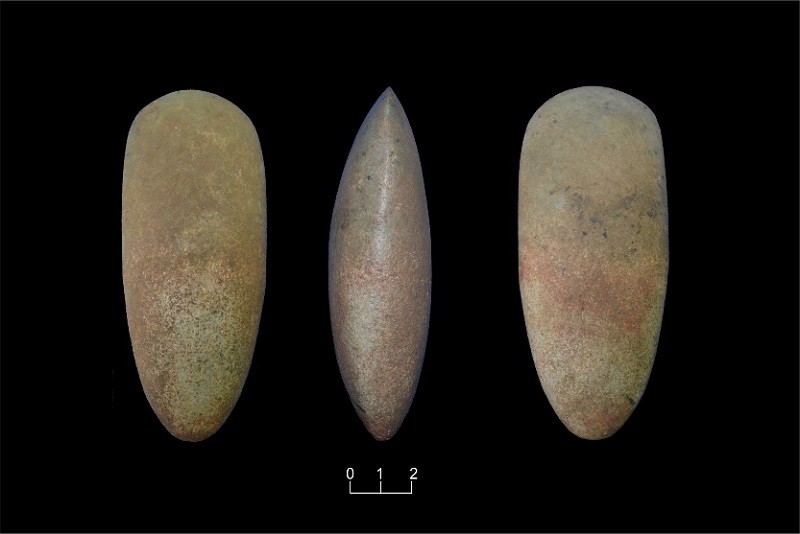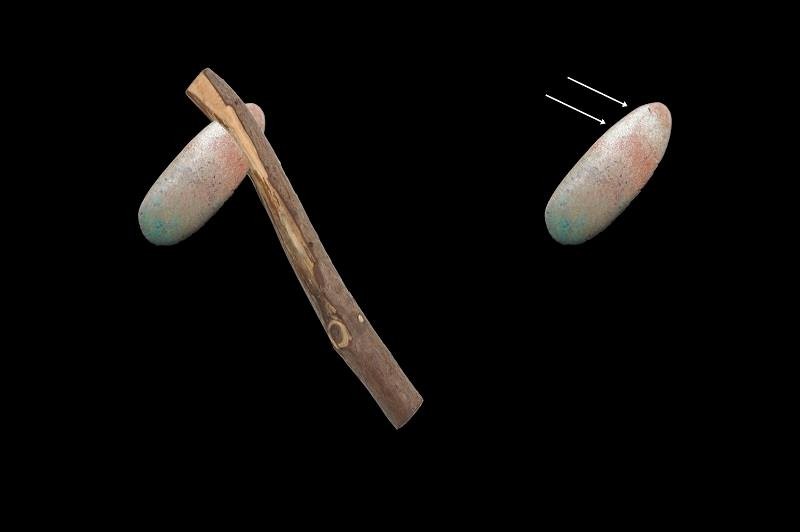polished neolithic axe from gorham’s cave
Polished Neolithic Axe from Gorham’s Cave
This polished axe, made from a metamorphic rock, corresponds to the Neolithic (~5,400 BCE) and was discovered in Level 2 at Gorham’s Cave. The early Neolithic is best known for the arrival of agriculture from the eastern Mediterranean but other technological advances were also introduced into the Iberian Peninsula; these included ceramics and the technique for polishing stone to produce tools, such as axes or adzes.
Although there are precedents of this technique already in use during the Palaeolithic, such as in Australia, China or Siberia, these are very exceptional and far from the Mediterranean Basin. The polishing technique itself can be seen in the European Venus sculptures from the Gravettian (~25-30 thousand years ago) or on bone, but not on stone tools.
These axes or adzes would have been hafted onto a wooden shaft to complete the tool.
Apart from their obvious use as tools, many of these items carried important symbolism. They were produced from exotic raw materials which could have travelled long distances via different trade networks, many also appearing in burial contexts.
If we look closely, we can see that our axe is impregnated with ochre. This could mean that it was used as a tool to process this mineral or could also have been coloured for symbolic purposes which are difficult to decipher. We must remember that ochre had been associated with funerary practices and rituals since the Palaeolithic.


Published: April 01, 2020
Other similar VM - Archaeology
18-20 Bomb House Lane
PO Box 939,
Gibraltar
